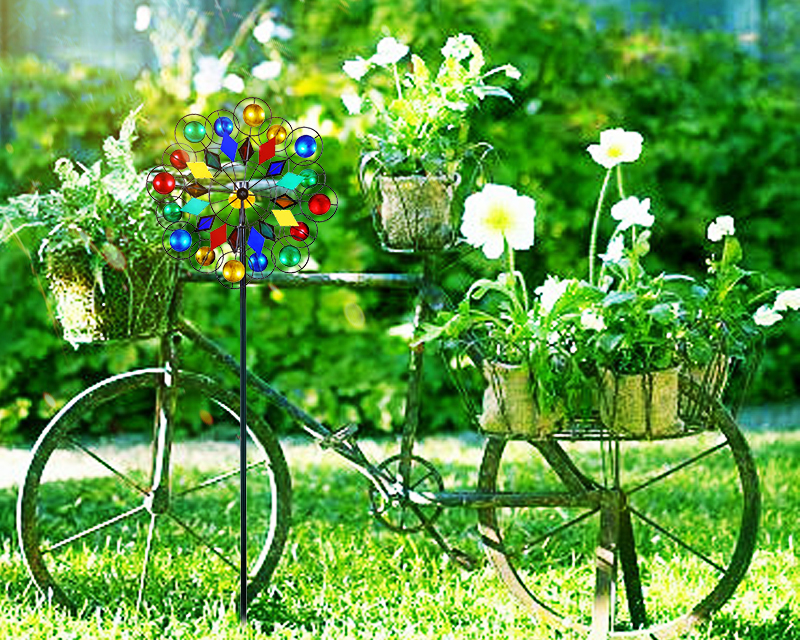No products in the cart.
Introduction: The Fascination with Flowers
Flowers have long held a special place in human culture, symbolizing everything from love and beauty to new beginnings and farewells. Their natural beauty, delicate structure, and vibrant colors have inspired artists, poets, and designers throughout history. However, real flowers have their limitations—they are ephemeral, sensitive to environmental conditions, and require regular care. This is where simulation flowers, also known as artificial or faux flowers, come into play. These crafted creations offer a lasting, low-maintenance alternative that blends the beauty of nature with the precision of technology.
In this article, we’ll explore the world of simulation flowers, delving into how they are made, the materials used, their various applications, and the reasons behind their growing popularity. By understanding the artistry and technology behind these flowers, you can better appreciate why they have become an essential element in modern decor. Finally, we’ll direct you to the Bestgarden store, where you can explore a wide range of high-quality simulation flowers and potted plants that perfectly suit your needs.
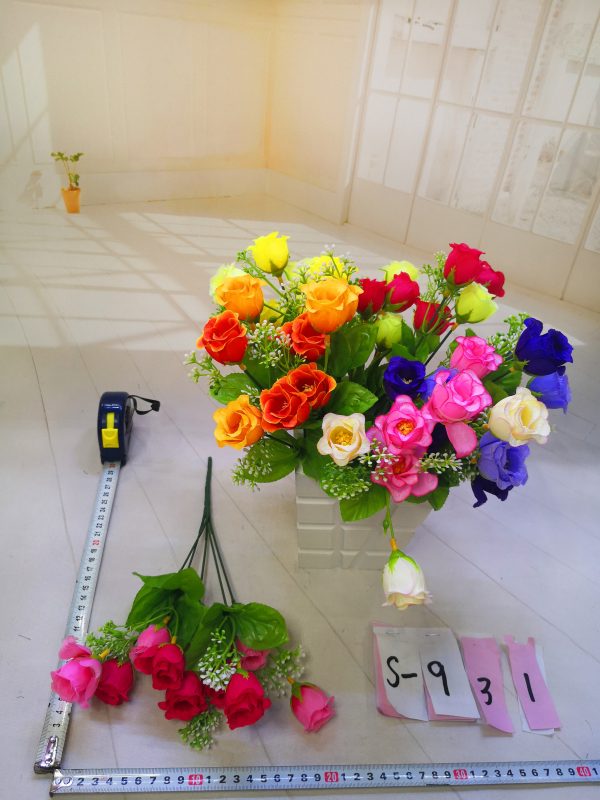
The Evolution of Simulation Flowers
Simulation flowers have a rich history that dates back thousands of years. The earliest known artificial flowers were made by the ancient Egyptians, who crafted them from thin sheets of horn and colored them with vegetable dyes. The Chinese, Romans, and Greeks also made artificial flowers from silk, gold, and silver. These early examples were often used in religious ceremonies or as adornments for the wealthy.
Ancient Beginnings
In ancient China, the art of creating silk flowers reached new heights during the Tang and Song dynasties (618–1279 AD). Craftsmen meticulously cut, painted, and assembled silk into realistic representations of flowers, often using real petals and leaves as models. These silk flowers became highly prized for their beauty and durability, and they were frequently used in imperial courts and religious ceremonies.
In Europe, the art of making artificial flowers flourished during the Renaissance. Italian and French artisans became known for their intricate creations made from silk, wax, and even porcelain. These flowers were often used to decorate churches, palaces, and the homes of the nobility.
The Industrial Revolution and Beyond
The Industrial Revolution in the 18th and 19th centuries brought significant advancements in the production of artificial flowers. The introduction of new materials such as cotton, velvet, and rayon, combined with mechanized production techniques, made artificial flowers more affordable and accessible to the general public. By the 20th century, artificial flowers were being mass-produced, and their popularity continued to grow.
Today, the production of simulation flowers has become a highly specialized industry that combines traditional craftsmanship with modern technology. Advances in materials, manufacturing processes, and design techniques have allowed for the creation of incredibly realistic artificial flowers that are nearly indistinguishable from their natural counterparts.
The Materials: A Look at What Goes into Making Simulation Flowers
One of the key factors that determine the quality and realism of simulation flowers is the material used in their production. Over the years, manufacturers have experimented with a wide range of materials, each offering different advantages in terms of appearance, durability, and cost.

Silk: The Classic Choice
Silk has been used to make artificial flowers for centuries, and it remains one of the most popular materials today. Silk flowers are known for their soft, delicate texture and their ability to mimic the sheen and translucency of real petals. High-quality silk flowers are often hand-dyed and hand-assembled, with each petal carefully shaped to replicate the natural curves and folds of real flowers.
However, silk flowers can be relatively expensive due to the cost of the material and the labor-intensive production process. They are also more delicate than other types of artificial flowers, making them better suited for indoor use.
Polyester: The Modern Standard
Polyester has become the most commonly used material for artificial flowers due to its affordability, durability, and versatility. Polyester flowers are made by heating the fabric and pressing it into molds to create the shape of petals and leaves. The fabric is then dyed and treated to add texture and color variations, resulting in a realistic appearance.
Polyester flowers are durable and resistant to fading, making them suitable for both indoor and outdoor use. They are also less expensive than silk flowers, making them a popular choice for those looking to decorate large spaces or create elaborate floral arrangements.
Latex and Foam: Adding Realism
Latex and foam are newer materials used in the production of artificial flowers, and they offer some unique advantages. Latex flowers are incredibly realistic, with a soft, flexible texture that closely mimics the feel of real petals. The material’s flexibility allows for the creation of flowers with intricate details, such as veins and ruffled edges, that are difficult to achieve with other materials.
Foam flowers, on the other hand, are lightweight and durable, making them ideal for use in large arrangements or outdoor displays. Foam can be easily shaped and colored, allowing for the creation of highly realistic flowers with a wide range of textures and colors.
Paper: A Crafty Alternative
Paper flowers have gained popularity in recent years as a DIY option for weddings, events, and home decor. These flowers are typically made from crepe paper, tissue paper, or cardstock, and they can be hand-painted or dyed to achieve a wide range of colors and patterns. While paper flowers are not as durable as those made from silk or polyester, they offer a unique, handcrafted charm that appeals to many people.
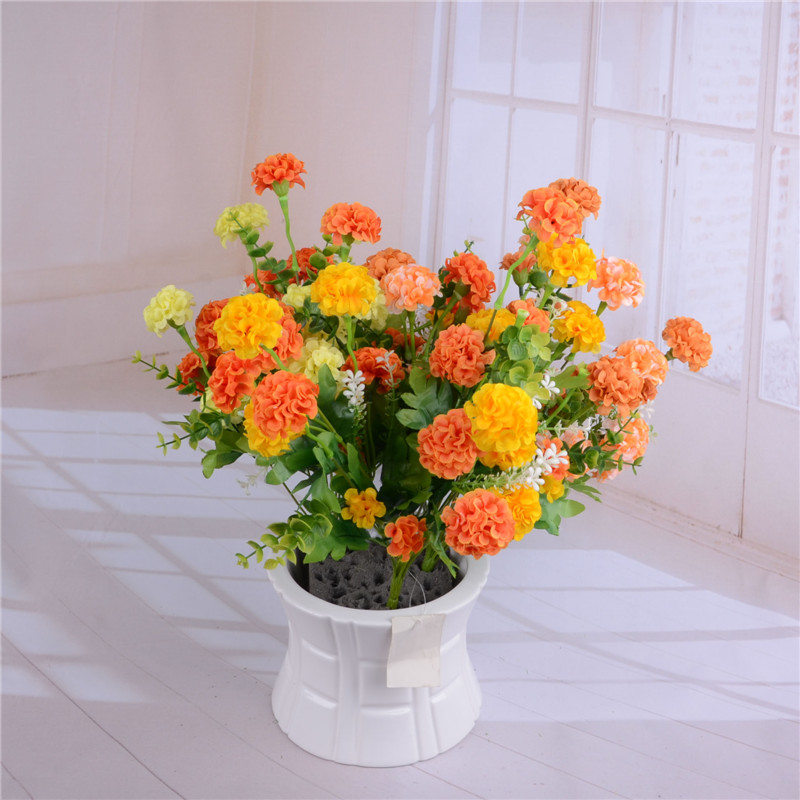
The Art of Crafting Simulation Flowers
Creating realistic simulation flowers is both an art and a science. The process requires a deep understanding of the natural structure and anatomy of flowers, as well as skill in manipulating materials to achieve the desired look. Here’s a closer look at how these beautiful creations come to life.
The Design Process
The creation of a simulation flower begins with the design process. Designers study real flowers to understand their shape, color, texture, and structure. They take detailed measurements and photographs of the flowers from various angles, paying close attention to the way petals overlap, the curvature of the stems, and the positioning of the leaves.
Designers often create sketches or digital renderings of the flowers to use as references during the production process. These designs are then translated into patterns or molds that will be used to shape the materials.
Shaping and Assembling the Flowers
Once the design is finalized, the next step is to shape the materials into the various parts of the flower. For silk and polyester flowers, this typically involves cutting the fabric into petal and leaf shapes and then pressing them into molds to create the desired curvature and texture. Latex and foam flowers are often molded or sculpted directly into their final shape.
The individual petals, leaves, and other components are then hand-painted or dyed to achieve the desired color and shading. This step requires a keen eye for detail and a deep understanding of color theory to ensure that the finished flower looks as realistic as possible.
Finally, the various components are assembled by hand. Petals are layered and glued together, stems are wrapped with floral tape, and leaves are attached at strategic points. This meticulous assembly process is what gives simulation flowers their lifelike appearance and durability.
Adding the Finishing Touches
The final step in creating simulation flowers is to add the finishing touches. This may include adding dew drops made from clear resin, applying a matte or gloss finish to the petals, or attaching additional elements such as pollen or stamens.
These small details are what make simulation flowers so convincing. When done correctly, they can elevate an artificial flower from a simple decoration to a true work of art.
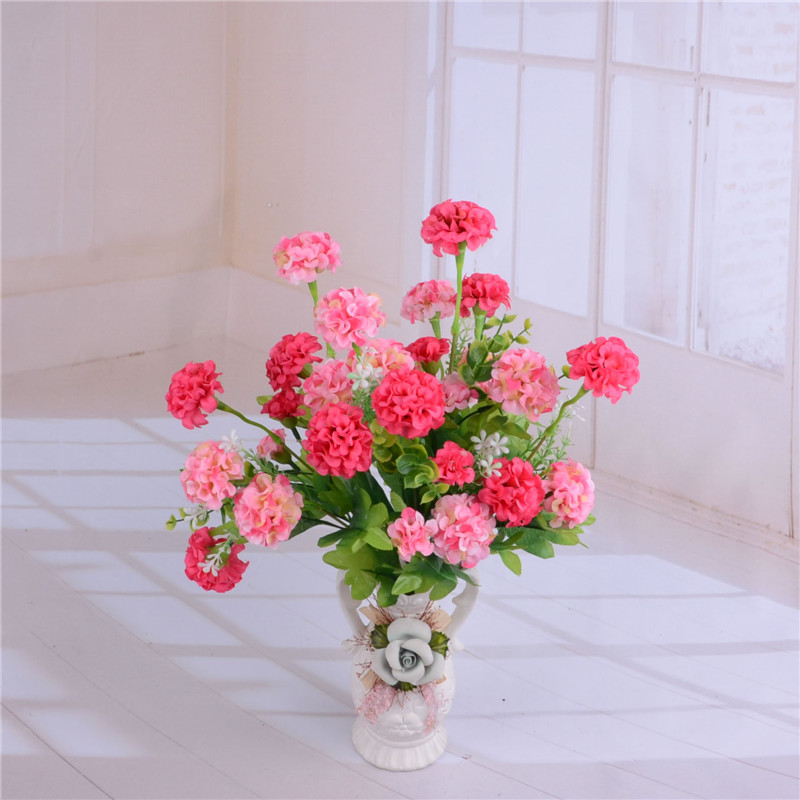
Applications of Simulation Flowers: Versatility and Longevity
Simulation flowers offer a wide range of applications, from home decor to event planning and beyond. Their versatility and longevity make them an ideal choice for those looking to enjoy the beauty of flowers without the maintenance and limitations of real blooms.
Home Decor
One of the most common uses for simulation flowers is in home decor. These flowers can be used to create beautiful arrangements that brighten up any room, add color to a neutral space, or complement existing decor. Unlike real flowers, simulation flowers do not wilt or die, making them a low-maintenance option for busy homeowners.
Simulation flowers are also ideal for decorating spaces that are not conducive to real plants, such as rooms with low light or areas that are exposed to drafts. With a wide range of styles, colors, and sizes available, it’s easy to find simulation flowers that match your personal taste and decor.
Event Planning
Simulation flowers have become increasingly popular in event planning, particularly for weddings and other special occasions. They offer several advantages over real flowers, including durability, cost-effectiveness, and the ability to create arrangements well in advance of the event.
For weddings, simulation flowers can be used in bouquets, centerpieces, and decorations, providing a consistent look throughout the event. They are also a practical choice for destination weddings or outdoor events, where real flowers may not hold up well in extreme weather conditions.
Commercial and Retail Spaces
Businesses and retail spaces often use simulation flowers to create an inviting atmosphere for customers. These flowers can be used in window displays, lobbies, and offices to add a touch of elegance and warmth. Because they require no maintenance, simulation flowers are a cost-effective way to enhance the appearance of a commercial space without the need for regular upkeep.
Art and Craft Projects
Simulation flowers are also popular in artistic and craft projects. Crafters use them to create wreaths, garlands, and other decorative items. The wide variety of styles and colors available in simulation flowers allows for endless creative possibilities. Whether you’re making a DIY centerpiece for a holiday table or creating a custom floral arrangement for a gift, simulation flowers offer a versatile and beautiful medium for your projects.
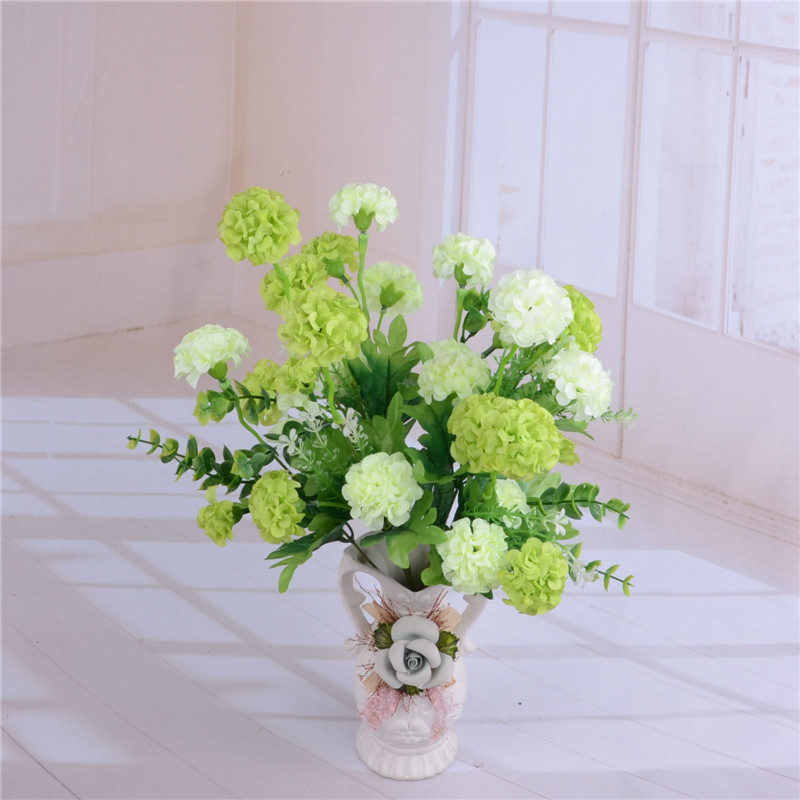
Conclusion: The Perfect Blend of Art and Technology
Simulation flowers represent the perfect blend of art and technology, offering a beautiful and practical alternative to real flowers. Whether used in home decor, event planning, or commercial spaces, these artificial blooms provide a lasting solution that combines the beauty of nature with the convenience of modern living.
For those interested in enhancing their space with top-quality simulation flowers, the Bestgarden store offers a wide selection of potted plants and other artificial floral arrangements. Visit Bestgarden store to explore their collection and find the perfect pieces to elevate your home or event decor.
